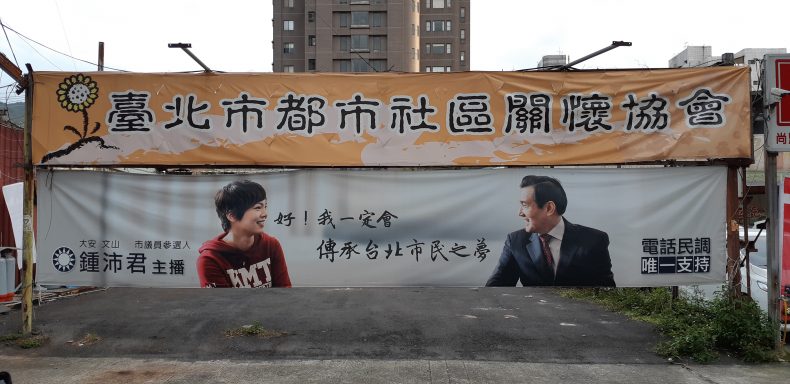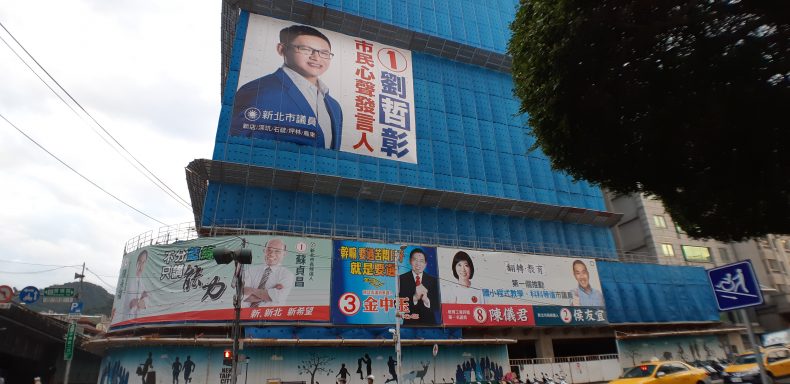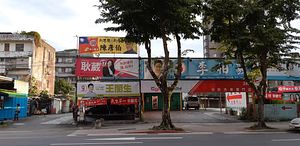November 24 is election day in Taiwan. 2018 is a midterm year with a focus on local and county-level seats, meaning the island will effectively hold a grassroots referendum on the past two years’ policies. As there are no absentee ballots in Taiwan, Taiwanese from around the island (and around the globe) will return to the towns they’re registered in to cast ballots.
Current President Tsai Ing-wen, who leans toward a pro-independence stance but has adopted a pragmatic status quo policy as president, has upped the stakes in recent weeks, playing into Taiwanese fears of a Chinese takeover in Taiwan. In a recent video, Tsai has drawn a clear line ahead of the upcoming elections: pro-China parties are dangerous for Taiwan’s democracy.
The last midterm elections in Taiwan, held in 2014, brought about a wave election for Tsai’s Democratic Progressive Party (DPP), which now controls a majority in the Legislative Yuan and holds a majority of local-level posts.
The DPP is a pro-independence party formed at the end of the martial law period in the 1980s. Before that, Taiwan had been ruled as a one-party dictatorship by the Chinese Nationalist Party, the Kuomintang (KMT), which took control of the island upon the end of World War II. During 38 years of martial law (1949-1987), the KMT fostered a Chinese identity on Taiwan, but that has rapidly broken down since democratization. Today a majority of Taiwanese identify as Taiwanese rather than Chinese. Politics in Taiwan is unique in that the major social cleavage is not liberal versus conservative, but rather pro-independence versus pro-China.
Tsai’s emphasis on the dangers of not voting DPP have drawn some criticism by observers amid fear that Taiwan’s politics, like other democracies in recent years, are taking a fear-based and Trumpian turn. However, the threat of Chinese meddling and potential for a soft takeover of Taiwan are real. A recent increase in activity from fringe political groups with pro-Beijing and pro-Chinese Communist Party ideology (with suspected funding from China) filtered through domestic organized crime or supported directly by China-born migrants living in Taiwan has begun to worry the DPP. A fracturing demographic may be ripe for exploitation, tribalism, and hyperpolarization.

A campaign sign featuring local KMT candidate Zhong Pei-jun with former president Ma Ying-jeou in Taipei’s Wenshan District. The unrelated community sign above it features a sunflower — famously used as a symbol of resistance to Ma’s policies in 2014. Photo by James X. Morris.
At the same time, former KMT president Ma Ying-jeou (2008-2016) has recently changed his tune on his approach to China. Ma had stepped into office as a peacemaker in cross-strait relations, adopting a revisionist version of the KMT’s hardline reunification policy, and following a status quo policy of “three noes”: no unification, no independence, and no use of force. While recently speaking at a seminar marking the third anniversary of his historic summit with China’s President Xi Jinping, Ma’s “no unification” became “not against unification.” While the statement was Ma’s alone, it had to be walked back by Taiwan’s Mainland Affairs Council spokesperson. Among Ma critics, the change was seen as the former president revealing his true colors, and an indicator of what a new KMT policy would be.
Ma’s 2010 Economic Cooperation Framework Agreement with China — and subsequent tone-deafness toward the hollowing-out of Taiwan’s economy – sparked the 2014 protests that became known as the Sunflower Movement. Months later, the KMT lost many of its midterm election bids due to what was seen as a handover of Taiwan’s economic strength to the mainland. It was a bellwether the KMT ignored, and Ma continued to make overtures to China. In 2016 the KMT lost control of both the presidency and the legislature to an opposition party for the first time in its history.
Now all eyes are on the DPP, which no longer has the benefit of being an opposition party. The KMT is hopeful it can gain an edge due to dissatisfaction with Tsai’s loss of five diplomatic allies in the past two years, a stagnant economy, and unpopular pension reforms. The DPP hopes their success in building links with Southeast Asian neighbors, a revitalization of connections with the United States, and their ability to staunch the bleeding of Taiwan’s economy will allow them to maintain power.

Enormous campaign banners hang from the scaffolding of a new building in New Taipei City’s Xindian District. Photo by James X. Morris.
In August, the Election Studies Center at National Chengchi University in Taipei released its latest report on Taiwan’s political trends. On the issue of independence versus unification with the mainland, maintaining the status quo remains the most popular option (with 57 percent of the island believing the status quo should be maintained for the near future or indefinitely). The reports also indicate that pragmatic approaches are more popular than immediate decisions. There is a slight preference for maintaining the status quo while moving toward independence versus maintaining the status quo while moving toward unification. However, over the past two years, a move towards unification has gained in popularity by a couple points.
While “Taiwanese only” remains the most popular identity on the island, the center reports a slight drop coinciding with a slight increase among Taiwanese who identify as both “Taiwanese and Chinese.” The center’s polls also indicate that nearly half of the island (47 percent) either identifies as politically independent or did not give a response, while 25 percent identify with the KMT, and nearly 22 percent identify with the DPP.
For either party to eke out a definite victory in the local elections, new strategies were necessary, leading to some interesting choices.
The DPP has China as its political bogeyman, and in the last few weeks before the midterms it appears they have played into this as much as they can. Is it a sign they worry they have not been able to bring around enough changes while in power, or merely a new tactic they’ve found viable? The global trend of democracies resorting to division and fear has apparently found its way into Taiwan, though given the unique politics of the KMT-DPP social divide, it is not without cause.
Meanwhile, the KMT has had a rough time reinventing itself in the post-Ma years. Disastrous economic policy has left the economy stalled, and they cannot seem to escape China’s carrot-and-stick allure. Last year the party attempted a rebranding, putting forward younger politicians and new mascots. However internal problems have not created good optics. In 2018 the party’s Youth Department ran a competition for a new mascot, which was widely panned before being pulled by KMT chairman Wu Den-yih in September. The mascot, dubbed “chicken man,” resembled a naked rubber chicken with comically small human arms and legs. The democratically-elected mascot was pulled after it sparked widespread ridicule.
The KMT also attempted to reach out to Taiwan’s youth through a hip-hop music initiative, but were soon upstaged by Taipei’s incumbent independent mayor Ko Wen-je whose own re-election hip-hop video went viral as soon as it was released in late October.
Ko rode into victory in the 2014 midterms following an independent and populist platform. While his opponents opted for flashy scripted rallies complete with well-timed dramatic music, Ko sang karaoke on stage with his family. Independents and fringe political movements appear to be increasing their share of exposure in Taiwan through grassroots means, and appealing to niches the major parties are ignoring. In some way the major parties have attempted to adopt these campaign tactics, but are failing to capture the same energy.

A customer watches midterm election news coverage on a television provided by a fried food stand in Taipei. Photo by James X. Morris.
As of November 25, the Taiwanese will have spoken. An analysis of the past two years’ policies will become clearer, as will the success (or failure) of the messaging from the DPP and KMT. Perhaps more importantly, should independents and fringe parties gain more in 2018, with the stakes already raised so high, the major parties may begin to tailor more targeted, hyperpolarized approaches for 2020.

































